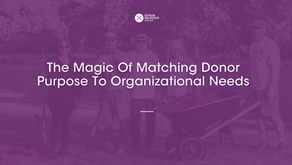Impact Reporting: Using Data Visualization to Demonstrate Who Gets What
- Lynne Wester

- Sep 15, 2022
- 2 min read
By Sarah Sims

The term “impact report” is very nebulous in our profession and used in just about every context. There are many communications and touch points that constitute an impact report or impact communication—and while it’s often a matter of semantics, it’s important to facilitate correct terminology and usage in our shops. This can help align expectations, avoid confusion, and better document the entire donor experience.
One of our favorite ways to document impact reporting efforts and educate our internal partners on our efforts is to create simple visualization tools that outline each major bucket of impact reporting or communications touch points. Think data visualization!
Data points to list include:
Name of effort
Timing (annual, bi-annual, quarterly, ad-hoc)
Audience (donor segments, approximate recipient count)
Delivery method (print, digital, web, video)
Content (high level summary of components or purpose such as storytelling, metrics, financial performance)
Image of sample report or communication
This following example does a great job conveying the impact reporting efforts of a centralized donor relations team – showing the majors buckets of customized reports and individual engagement plans for top donors, broad based reports for large donor segments, and annual endowment reports. The back side shows a variety of reports that were sent previously in these areas for partners to understand (and think creatively!) about what constitutes an impact report as well as what the central team is producing for all donors.


This template below demonstrates how donors at all levels of the giving pyramid can be served by a variety of impact communications. Seeing the audience, giving level, and touch point overlayed together gives the readers a comprehensive view of the donor experience from the annual giving to principal gifts space.

This information—when presented as a one-page summary—can be a strategic tool to document team priorities, educate partners on all reporting efforts, allow readers to see and understand a more holistic donor experience, and document our staff and budgetary return on investment. It helps create buy-in and understanding among our partners! No matter what the goal is—to document team priorities or to understand the communications experience—there is a creative yet functional solution that can be implemented.
Tell us how you have implemented data visualization efforts into your impact reporting programs – we’d love to see your data genius and creativity at work!





